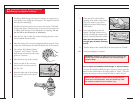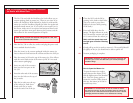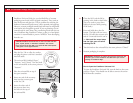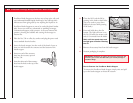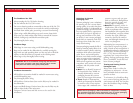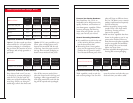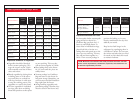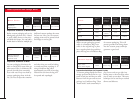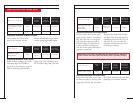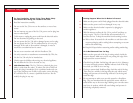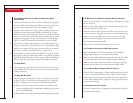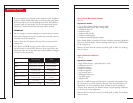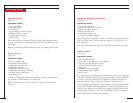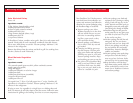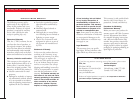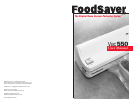
THE FOODSAVER USER MANUAL
33
Troubleshooting
THE FOODSAVER USER MANUAL
32
The Mason Jar or FoodSaver Canister Will Not Vacuum:
1
Make sure the jar sealer is centered and pressed firmly over the lid
on the mason jar.
2 Make sure the rubber gasket on the canister/mason jar lid is free
from food materials, crumbs, etc.
3 Make sure the rim of the canister or mason jar does not have any
cracks or scratches. Any gaps can prevent a vacuum from forming.
4 Make sure you aren’t filling the canister or mason jar too full
prior to vacuum packaging. Always leave at least one inch (1")
between the contents and the lid.
5 Make sure the metal lid of the mason jar is not bent.
The FoodSaver Universal Lid Will Not Vacuum:
1
Make sure that the rim of the container is smooth and flat.
Ragged edges will prevent a vacuum from forming.
2 Make sure the rubber gasket underneath the universal lid and the
rim of the container are free from food materials, crumbs, etc.
3 Make sure the knob on the universal lid is closing and opening
properly and that there are no food materials caught inside.
The FoodSaver Bottle Stopper Will Not Vacuum:
1
Make sure the bottle stopper is fitting snugly inside the bottle. If
it is loose, air may leak in and prevent a vacuum from forming.
2 Make sure the neck of the bottle and tip of the hose attachment
are free from food materials, crumbs, etc. Any gaps will prevent a
vacuum from forming.
If You Cannot Fix the Problem:
Call our Consumer Services Department at the number listed at
the back of this manual.
Air Was Removed From the Bag, But Has Come Back
Into the Bag:
1 Check the seal of the bag. There may be a wrinkle in the bag along
the seal, which caused leakage and allowed air to come back into
the bag. Cut the bag open, and vacuum package it again.
2 Moisture or food material (i.e. juices, grease, crumbs, powders, etc.)
along the seal may have caused leakage and allowed air to come
back into the bag. Cut the bag open, wipe the top inside of the bag
material to clear away any moisture or food residue, then vacuum
package the bag again. See the “Food Preparation and Storage
Guide” in this User Manual for guidelines for specific foods.
3 Food items with sharp edges may have punctured the bag. If you
find a puncture hole, you will need to use a new FoodSaver Bag.
Make sure to protect the bag from puncture holes by wrapping
the items in cushioning material such as a paper towel.
4 If you find none of these conditions identified in 1-3 (above), and the
bag appears to have air inside, fermentation or the release of natural
gases from inside the foods may have occurred. This could indicate
that the food may have begun to spoil and should be discarded.
The Bag Melts:
1
The sealing strip may have become too hot. Always wait at least
20 seconds for the Vac 550 to cool down before vacuuming and/or
sealing another bag.
The Bag Will Not Seal:
1
Wait 20 minutes to allow the Vac 550 to cool off, then try using
it again. The Vac 550 will shut off automatically if it is becomes
too hot. To help prevent the machine from becoming too hot:
a. Wait at least 20 seconds for the machine to cool down after
vacuum packaging and/or sealing before attempting to vacuum
and/or seal another bag.
b. Keep the lid open before vacuuming and/or sealing another bag.



